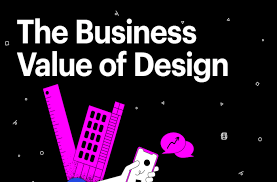The word design is thrown in a lot in our everyday conversations: logos, cars, apps, websites…and of course, everyone’s popular design discussions: iPhone.
However, one design field that seems to be missing in this discussion is architecture.
Instead, two other words constantly pop up regarding architecture design: budget and schedule.
As an architect, I spend more time using my calculator or excel charts than “sketching on napkins.” It is a quintessential architect joke about how architects can just whip up world-famous design on a whim and produce well-known buildings.

Personally, I tend to take out my phone and check the calendar or the calculator app to design the project….rather than with napkins!
The values of architecture design in “projects coming under budget or schedules” have been celebrated in the name of ONE essential measurement: money.
After checking off these parameters (budget and schedule), another “bonus” value gets discussed: the design of buildings.
However, the report-McKinsey Design Index (MDI)-produced by the world’s most reputable consulting company, McKinsey, and its statement contradicts the notable projects coming under budget or schedule mantra.
According to the report, companies producing exceptional design are rewarded with high profits, revenues…more $$$.
As a business with a keen interest in increasing “business performance,” I was more than willing to go through reading the MDI report to get the secret sauce of other design companies.
It was time to evaluate the four key metrics in the report that contribute to business performance and whether those metrics can be used in the architecture industry.
Analytical Leadership
Initially, I had difficulty understanding or relating to this point as a small-sized owner of an architecture firm.

All leaders (business owners) are analytical, right?
Wrong, the report indicates.
According to the report, business and design separation is precisely the wrong approach.
In fact, measuring the design work like other business measurements-profits, revenue, expense (all the elements with dollar signs attached) is the way to improve any company’s bottom line.
I suspect those 400 interviewed companies do not include many architecture firms…or none?
It is not a question of analytical leadership. It is the managing the difficulty of keeping those leadership decisions in the face of constantly changing financial objectives by many.
Therefore, describing the merits of architecture projects in concrete (and easy) terms such as budget and schedule has been the hallmark of architecture projects.
Cross-functional talent
As an architect, I wholly agree with this point.
In fact, in typical project meetings, many designers are at the table: engineers, consultants, clients and the architect.

As the report states, “Focussing on design performance, user experience” by everyone is key to executing a successful project.
In architecture design, focusing/visualizing the end-user experience during the design stage by everyone involved would be the ultimate way to achieve the project’s success.
User-centric design
The success of any design work can only be measured by end-users (a.k.a. by all of us).

There are many examples of positive end-user experiences due to well-designed items in our life. Appreciating the latest updates on my phones or feeling the calm from great outdoor spaces during a pandemic could be such examples.
Focussing on the excellent experience part of the design will always be in demand, and increasing business performance.
Continually listening/testing/iteration with end-users
Well…this is hard to do in the architecture design field.

The completed building cannot get new updates like our phones. However, there is a great source of knowledge for architects standing somewhere else: past projects.
Evaluating past projects and learning from their end-user experience is how architects can implement this point.
Of course, trying to find time to research those past project lessons seems to be another “secondary” element next to the forever primary ones: budget and schedules.
Final Thought
Architecture design requires two things that make it difficult from other design sectors; time and money, or more accurately, the scale of time and money.
MDI report is “mostly” correct in how the design work should be done.
However, the report does not consider the scale of time/money involved in the design process and many conflicting objectives from different people, and “their” time and money objectives.
Overall, the MDI report offers hope we all designers believe in but are challenging to practice in real life…including yours truly.
With this new (and cautious) optimism, I might just try sketching on napkins at the next potential client meeting while having the phone calculator on! (to be ready to answer their pointed money questions) 🙂
